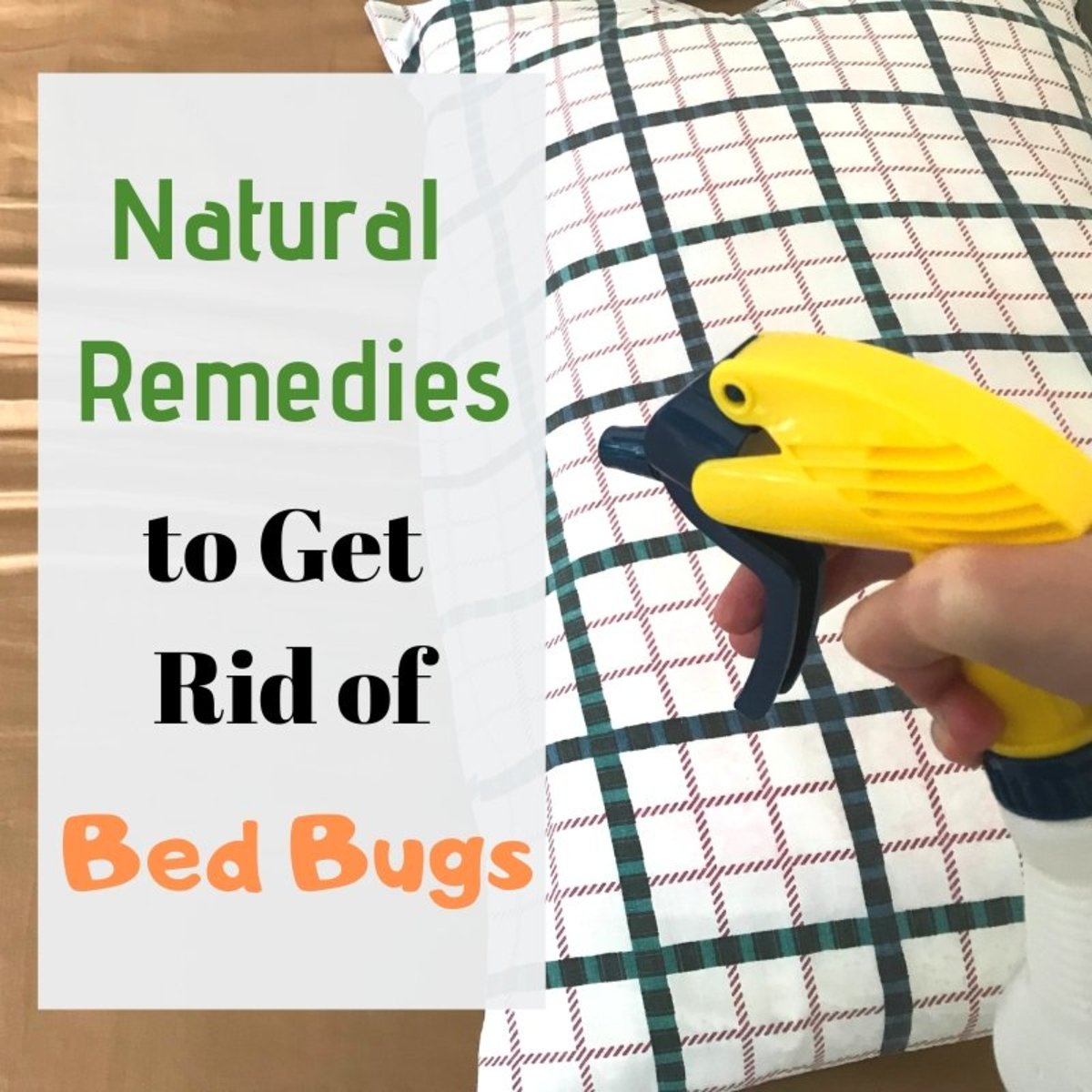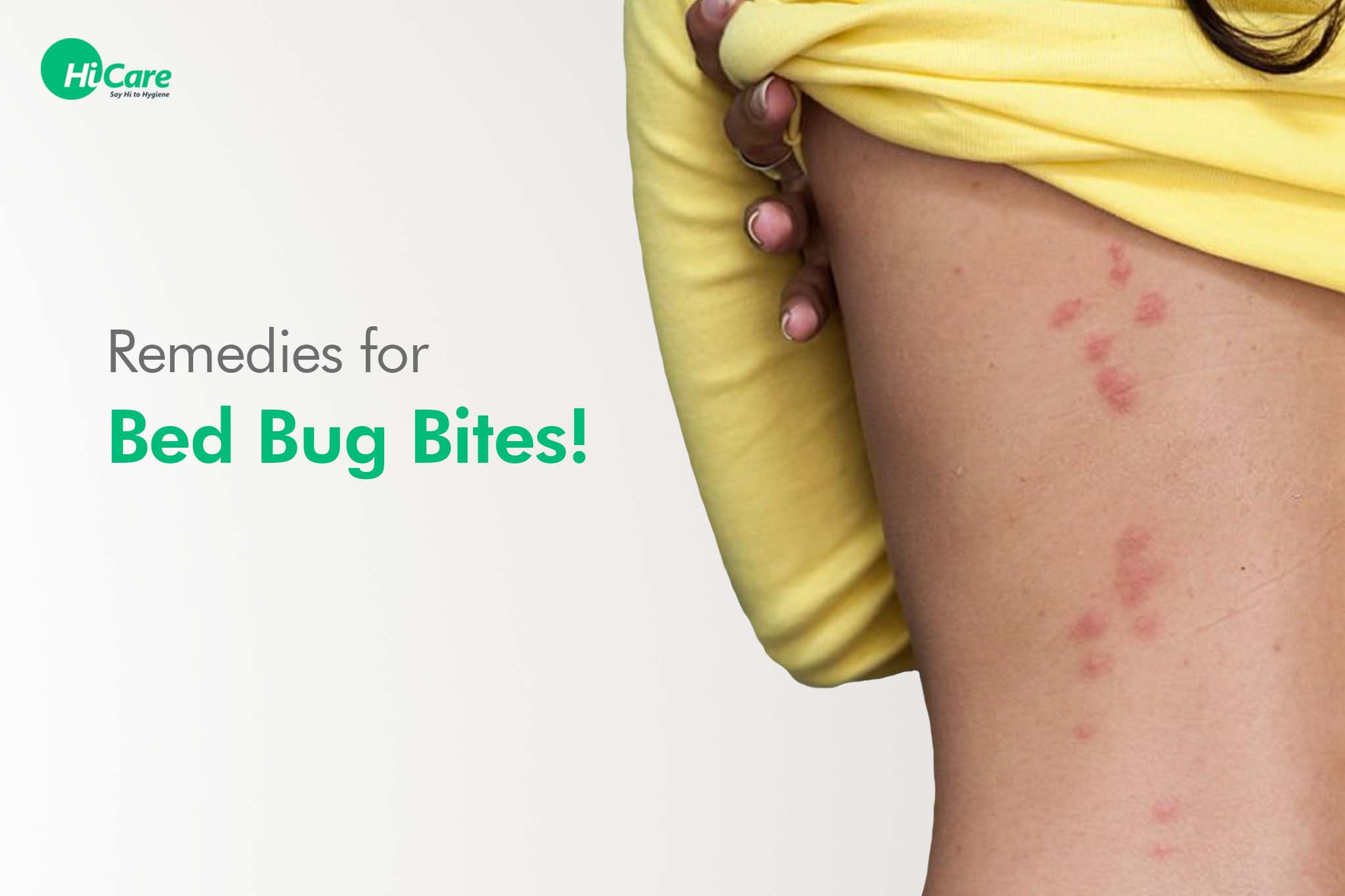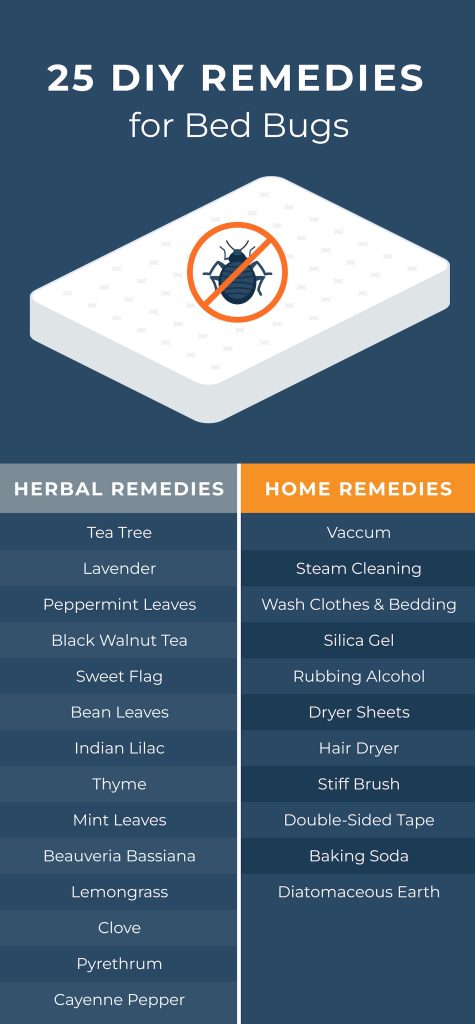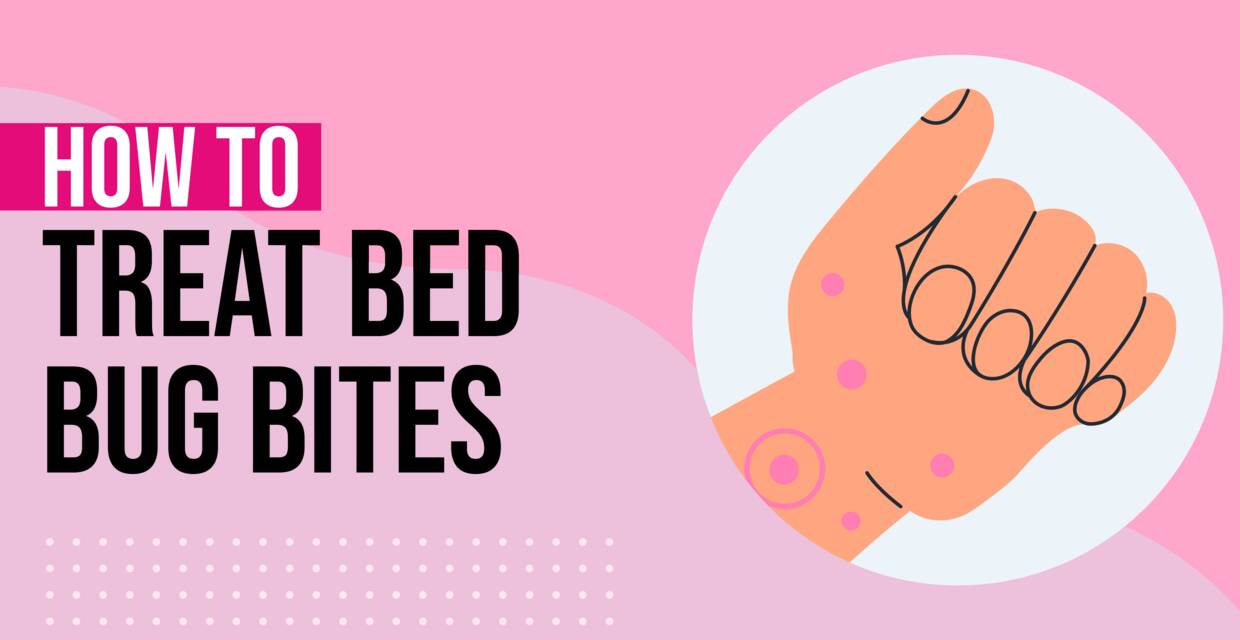To treat bed bugs at home, start by thoroughly cleaning and decluttering your living space. Then, use a vacuum to remove any visible bugs and their eggs, and wash and dry all bedding and clothing on high heat.
Additionally, consider using bed bug traps, encasements, and insecticides as directed to eliminate the infestation. Finally, be sure to inspect and treat any cracks, crevices, and furniture where bed bugs may be hiding. Dealing with a bed bug infestation can be a frustrating and stressful experience.
However, taking the necessary steps to treat the issue can help bring peace of mind back to your home. In this guide, we’ll explore effective methods for treating bed bugs at home, providing you with the knowledge and tools needed to address the problem and prevent future infestations. With our actionable tips and techniques, you’ll be able to take back control of your living space and enjoy a bed bug-free environment once again.

Credit: dengarden.com
Identifying Bed Bugs
Bed bugs are pesky insects that feed on human blood and can be challenging to eradicate. Identifying bed bugs early is crucial to preventing an infestation from spreading further.
Symptoms Of Bed Bug Infestation
- Red, itchy bites in a cluster on skin
- Dark spots on bedding or mattress
- Musty odor in the room
Confirming Bed Bug Bites
- Inspect bite marks for redness and swelling
- Look for linear patterns of bites
- Consult a dermatologist for confirmation
Preparing Your Home
To treat bed bugs at home, start by thoroughly cleaning and decluttering the infested areas. Wash and dry infested items at high temperatures, then vacuum and steam clean carpets and furniture. Use special bed bug encasements on mattresses and box springs, and consider hiring a professional exterminator for severe infestations.
Regular inspection and maintenance are crucial to prevent future outbreaks.
Remove Clutter
Get rid of excess clutter to eliminate hiding spots for bed bugs.
Vacuum Thoroughly
Vacuum all surfaces including carpets, furniture, and baseboards.
Wash And Dry Infested Bedding
Machine wash bedding in hot water and dry on high heat to kill bed bugs.
Non-chemical Treatments
When it comes to treating bed bugs at home, non-chemical methods offer a safe and effective solution. These treatments eliminate bed bugs without the use of potentially harmful chemicals. Here are three non-chemical treatments that have proven to be successful in getting rid of bed bugs: Heat Treatment, Freezing Treatment, and Steam Treatment.
Heat Treatment
Heat treatment is an effective way to kill bed bugs and their eggs in all life stages. Exposing bed bugs to high temperatures can quickly eradicate an infestation. Heat treatments can be conducted using specialized heating equipment or by raising the temperature of the affected area using household items.
Here’s how you can use heat treatment to eliminate bed bugs:
- Wash all infested linens, clothing, and fabrics in hot water and dry them on high heat settings.
- Use a steam cleaner with a high-temperature setting to treat mattresses, furniture, and cracks and crevices where bed bugs hide.
- Seal infested items in plastic bags and leave them in a hot car for several hours. The elevated temperatures will kill the bed bugs.
Freezing Treatment
Freezing treatment is another effective non-chemical method to combat bed bugs. Low temperatures can destroy bed bugs and halt their reproductive cycle. This treatment option requires exposing bed bugs and infested items to temperatures well below freezing point.
Here’s how you can use freezing treatment to eliminate bed bugs:
- Place infested items, such as clothing or upholstered furniture, in sealed plastic bags.
- Put the sealed bags in a deep freezer set to -18°C (-0.4°F) or lower.
- Leave the items in the freezer for at least 4 days to ensure all stages of bed bugs are killed.
- Remove the items from the freezer and thaw them at room temperature. Dispose of any dead bed bugs.
Steam Treatment
Using steam to treat bed bugs is an effective way to kill these pests and their eggs. The high temperature of steam penetrates cracks and crevices, destroying every life stage of the bed bugs it comes into contact with. Ensure the steam temperature is high enough to kill bed bugs, typically above 50°C (122°F).
Here’s how you can use steam treatment to eliminate bed bugs:
- Use a steam cleaner with a steam temperature above 50°C (122°F) and direct the nozzle at all surfaces suspected to be infested with bed bugs.
- Move the steam cleaner continuously to ensure all bed bugs are exposed to the hot steam.
- Pay particular attention to cracks and crevices, mattress seams, furniture joints, and baseboards.
- After steaming, thoroughly vacuum the treated area to remove dead bed bugs and their eggs.

Credit: hicare.in
Chemical Treatments
Chemical treatments are a powerful way to address bed bug infestations. When used carefully and according to label instructions, these products can effectively eliminate bed bugs from your home.
Insecticides
Insecticides are chemical solutions specifically designed to kill bed bugs. They come in various forms such as sprays, powders, and concentrated liquids. When applying insecticides, it’s crucial to follow the manufacturer’s directions and safety precautions to ensure effective and safe usage.
Diatomaceous Earth
Diatomaceous Earth is a natural substance that can be used as an alternative to harsh chemical insecticides. It works by piercing the exoskeleton of bed bugs, leading to dehydration and eventual death. This powdery substance should be applied strategically in areas where bed bugs are likely to travel, such as cracks, crevices, and under furniture.
Natural Repellents
Natural repellents offer a non-toxic approach to deterring bed bugs. Products such as essential oils, like lavender and tea tree oil, are known for their repelling properties. By applying these natural repellents around your sleeping area and infested areas, you can discourage bed bugs from settling in.
Treating Common Infestation Areas
When treating a bed bug infestation at home, it’s crucial to focus on common infestation areas where these pesky creatures love to hide. Targeting these areas effectively can help eradicate bed bugs from your living environment. Here are some essential tips for treating the most common infestation areas in your home.
Mattresses And Bed Frames
One of the primary places where bed bugs tend to harbor is in and around the mattresses and bed frames. To effectively treat these areas, start by thoroughly inspecting the seams, tufts, and folds of the mattress. Use a vacuum cleaner to remove any bed bugs, eggs, or droppings, and then encase the mattress and box spring in a bed bug-proof cover to prevent re-infestation. Similarly, inspect and treat all the nooks and crannies of the bed frame, including the joints and crevices. Consider using a residual insecticide specifically labeled for use on mattresses and bed frames to eliminate any remaining bed bugs.
Furniture And Upholstery
Furniture and upholstery are also prime spots for bed bugs to hide. Remove and thoroughly inspect cushions, pillows, and the seams of upholstered furniture. Use a steamer to treat these areas, as the high heat can kill bed bugs and their eggs. For wooden furniture, consider using a residual insecticide, and always follow the manufacturer’s instructions. Regularly vacuum upholstered furniture and consider using a protective cover.
Carpets And Rugs
Bed bugs can also find refuge in carpets and rugs, making it essential to treat these areas as well. Start by vacuuming the carpet thoroughly, paying close attention to the edges and underneath furniture. Follow up with steam cleaning for an effective bed bug elimination method. Consider using a pesticide specifically designed for carpets and rugs, ensuring it is safe for indoor use.

Credit: www.sleepadvisor.org
Preventing Reinfestation
Preventing reinfestation is a crucial step in effectively treating bed bugs at home. These pesky insects have a knack for hiding in the tiniest of cracks and crevices, making it challenging to completely eliminate them. However, by implementing a few preventive measures, you can minimize the risk of bed bug infestation and enjoy a peaceful night’s sleep. In this article, we’ll explore three effective methods to prevent reinfestation: sealing cracks and crevices, using bed bug mattress covers, and regular cleaning and inspection.
Sealing Cracks And Crevices
One of the primary ways bed bugs enter your home is through cracks and crevices in walls, floors, and furniture. These tiny openings provide them with a convenient pathway to infest your living spaces. By sealing these entry points, you can considerably reduce the chances of reinfestation.
To seal cracks and crevices effectively:
- Use a silicone-based caulk or sealant to fill any gaps or cracks in walls and floors.
- Inspect furniture, especially wooden bed frames, for any cracks or holes. If found, use wood putty or sealant to close them off.
- Install door sweeps on exterior doors to block any potential entry points.
Using Bed Bug Mattress Covers
Bed bugs are notorious for hiding in mattresses and box springs. By encasing your bedding with specialized bed bug covers, you create an impenetrable barrier that prevents these pests from infesting your sleeping area.
When buying mattress covers, keep the following tips in mind:
- Choose covers that are specifically designed to block bed bugs.
- Ensure the covers are labeled “bed bug certified” or “bed bug-proof.”
- Check for covers with zippered enclosures to prevent any gaps.
- Regularly inspect the covers for tears or openings and promptly replace them if necessary.
Regular Cleaning And Inspection
Maintaining a clean and clutter-free environment is vital for preventing bed bug reinfestation. Regular cleaning and inspection will help you identify any signs of their presence early on, allowing you to take immediate action.
Follow these steps for effective cleaning and inspection:
- Vacuum your living spaces, including carpets, upholstery, and crevices regularly.
- Pay extra attention to areas where bed bugs are likely to hide, such as mattress seams, bed frames, and furniture joints.
- Dispose of the vacuum bag or clean the canister in hot soapy water to eliminate any captured bugs.
- Wash bedding, curtains, and clothing in hot water and dry them on high heat to kill any hidden bed bugs or eggs.
- Inspect your bedding and furniture regularly for signs of bed bugs, including dark spots, shed skins, or blood stains.
Professional Extermination
Professional extermination services can be effective in treating severe bed bug infestations. Knowing when to seek professional help and what to expect from these professionals is crucial in effectively eliminating bed bugs from your home.
When To Seek Professional Help
If home remedies prove ineffective or if the infestation is widespread, it’s time to call in professionals. Look for signs like persistent bites, strong musty odors, or visible bed bugs.
What To Expect From Professionals
Professional exterminators will conduct a thorough inspection of your home, identify the extent of the infestation, and provide a customized treatment plan. They may use methods like heat treatment, chemical sprays, or fumigation to eliminate bed bugs.
Dealing With Bed Bugs In Different Settings
Dealing with Bed Bugs in Different Settings: Bed bugs can be a nuisance in various environments. Knowing how to address them effectively based on the setting is crucial.
Apartments And Condominiums
In apartments and condominiums, cooperate with neighbors to treat all units simultaneously.
- Vacuum regularly to eliminate bed bugs and their eggs.
- Use encasements on mattresses and box springs to trap bed bugs.
- Seal cracks and crevices where bed bugs can hide.
Hotels And Vacation Rentals
Inspect your room thoroughly upon arrival in hotels or vacation rentals.
- Keep luggage off the floor and inspect it before packing up.
- Wash and dry clothes on high heat after traveling to kill any bed bugs.
- Report any signs of bed bugs to the accommodation staff immediately.
Shared Living Spaces
Communication is key in shared living spaces such as dormitories or shelters.
- Collaborate with roommates to tackle the infestation together.
- Declutter and reduce hiding spots for bed bugs in common areas.
- Regularly inspect bedding and furniture for signs of bed bugs.
Frequently Asked Questions On How To Treat Bed Bugs At Home?
How Can I Identify A Bed Bug Infestation At Home?
To identify a bed bug infestation, look for small reddish-brown insects, bloodstains on sheets, or a sweet musty odor in the room. Inspect mattress seams, furniture, and behind picture frames for signs of bed bugs.
What Are The Most Effective Home Remedies For Treating Bed Bugs?
Some effective home remedies for bed bugs include using diatomaceous earth, applying tea tree oil, steam cleaning, and using mattress encasements. These methods can help reduce bed bug populations and prevent further infestations.
How Can I Prevent Bed Bugs From Spreading To Other Areas In My Home?
To prevent the spread of bed bugs, isolate infested items, vacuum regularly, and wash bedding in hot water. Use mattress and box spring encasements, seal cracks and crevices, and declutter your home to minimize hiding spots for bed bugs.
Conclusion
To sum up, treating bed bugs at home requires a multi-faceted approach that combines thorough cleaning, heat treatment, and the use of natural remedies or insecticides. Remember to regularly vacuum, wash bedding in hot water, and seal any cracks or crevices.
Additionally, consider hiring a professional exterminator for severe infestations. By following these methods, you can eliminate these pesky creatures and create a clean and bed bug-free environment in your home.
Related posts:

I’m MD Tanvir, and I bring years of expertise gained from working closely with pest control companies to the forefront. My journey in the industry has inspired me to launch Bug Battler, a platform aimed at equipping people with the know-how to combat pests autonomously. Through Bug Battler, I aim to empower individuals with practical insights to tackle pest infestations effectively.

